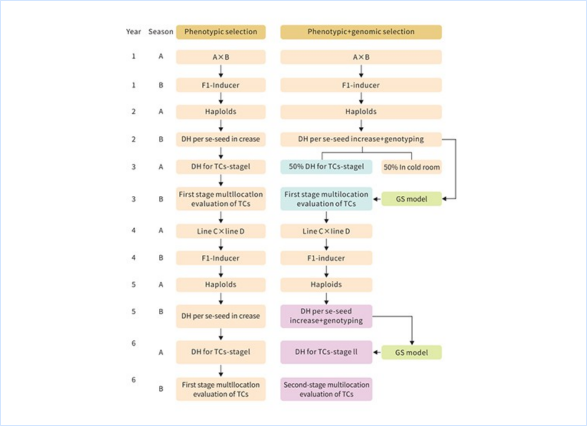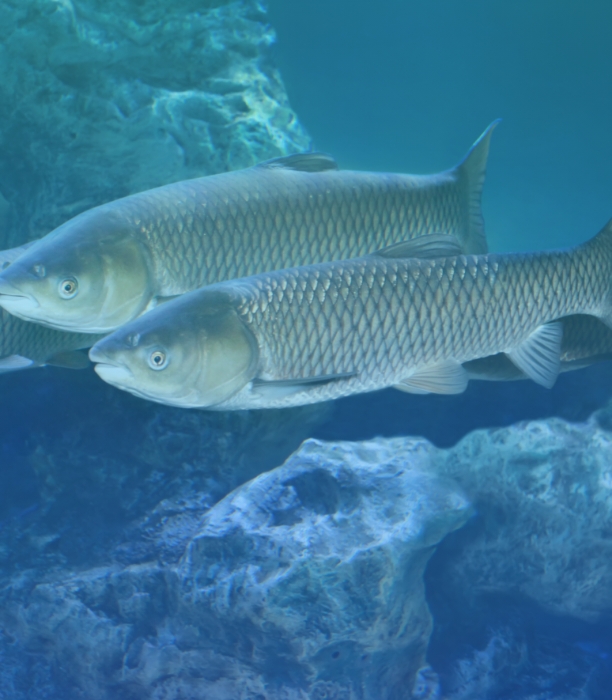
Core Theory
Core Theory
Genomic breeding
The concept of Genomic Selection (GS) was proposed by Professor Theo Meuweissen from the Norwegian University of Life Sciences in 2001. It is a new method for selective breeding that utilizes high-density molecular markers covering the entire genome. By constructing a predictive model and estimating the Genomic Estimated Breeding Value (GEBV) based on the genome, early individuals can be predicted and selected, thereby shortening the generation interval, accelerating the breeding process, and saving a lot of costs.This method has particularly good predictive performance for low heritability and complex traits that are difficult to measure, truly achieving the guidance of breeding practice through genome technology. This technology currently focuses mainly on early prediction, hence it is also known as Genomic Prediction (GP)

Analysis of growth and behavioral models of aquatic animals
With the development of digital aquaculture and smart aquaculture, the Process Based Crop Growth Simulation Model plays an increasingly important role in simulating the response and adaptation of aquatic animals to environmental changes, optimizing water management, selecting aquaculture varieties and strains, achieving carbon neutrality in aquaculture, and reducing blue carbon sequestration emissions. The Decision Support Systems for Agrotechnology Transfer (DSSAT) model is one of the world-renowned models for simulating the growth of aquatic animals. The DSSAT model kernel algorithm is developed based on Fortran language, and the software interface is developed based on C++.Research on Animal Nutrition and Welfare
We often hear about 'human welfare', but do you know about 'animal welfare'? Why is it important? Animal welfare and human welfare are closely linked. In many places, the health and condition of animals determine whether humans can obtain a stable food supply, and the health and condition of animals depend on the care and nutrition they receive. We need to focus on animal welfare from a global perspective, as it is an indispensable part of the big puzzle, involving food safety and food security, human and animal health, environmental and ecological development, and sustainable development. Animal welfare is the shared responsibility of all government departments, communities, people who own and care about animals, civil society organizations, educational institutions, veterinarians, and scientists.
The Food and Agriculture Organization of the United Nations believes that animal welfare is an important means of improving animal husbandry and health, and has made animal welfare a key area of focus for the development of the global livestock system. To this end, the Food and Agriculture Organization of the United Nations is working to promote knowledge sharing, support education and training, and capacity building, facilitate the implementation of field intervention projects, and encourage responsible investment that benefits animal welfare and the healthy development of animal husbandry.


Research on Ecological Microbial Water Purification
The purification effect of water microorganisms, also known as water self purification, refers to the process in which microorganisms in water oxidize and decompose (including aerobic and anaerobic decomposition) organic pollutants to purify water quality. Aerobic microorganisms can oxidize and decompose organic pollutants into simple and stable inorganic substances such as carbon dioxide, water, nitrate, and phosphate, while consuming a certain amount of dissolved oxygen. The dissolved oxygen consumed can be restored to oxygen through air diffusion on the surface of water bodies and oxygen producing photosynthesis in aquatic plants.
The biota in water bodies can also reflect the self purification process of water bodies. When water is polluted, the addition of a large amount of nutrients can lead to the proliferation of pollution tolerant microorganisms, especially heterotrophic bacteria; Juvenile mayflies, mackerel, diatoms, and other pollutants that are sensitive to pollution will disappear. After a period of purification, protozoa that mainly ingest bacteria can develop in water bodies. Algae that feed on inorganic nutrients, such as certain blue-green algae, can only proliferate in large quantities and dominate after pollutants are completely degraded and sufficient nitrogen and phosphorus are released. Through these processes, water quality is restored to clean, and the structure of biological communities in water is also restored to normal.
According to the self purification laws of different water bodies, fully utilize the self purification capacity of water bodies, arrange production layout reasonably while ensuring that water bodies are not polluted, reduce the burden of artificial treatment of organic pollutants, and control pollution in the most economical way.

-
Phone
400-880-1653 -
Wechat



